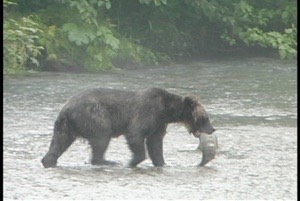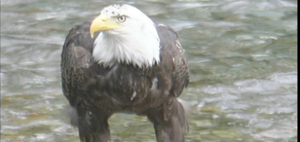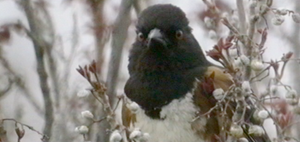Sometimes things don’t fit into nice little geographic boxes, this is the place for those things. It is just a blog, a blog with posts about the things of the mind. As such it needs no special name - it is simply a blog. For a while, these entries will consist (mostly) of reprints of blog posts from the past. The following entry was first published on April 1, 2014 and was the first entry of my blog on www.bobbarnes.us.
In the Form of Twain
Samuel Clemens, in his autobiography, mused about the best way to describe one’s life and in the end it came down to a choice between “first to last” and “what I was thinking about this morning”. He opted for the later, choosing to write about what moved him at the moment. Being a great fan of Mark Twain I choose the same approach.
Some time ago I was much younger, I wandered through the woods, across the desert, along streams and rivers, and through waves crashing on tropical beaches. I tripped down jungle trails and climbed across ice fields and up mountains -- always in search of the incredible beauty of nature -- always in search of a story. I, since my earliest memories, have wanted to make art by capturing images on film. I have had an adventure here and there -- adventures can be strange, sometimes they aren’t really that much fun when they are happening, but they are later -- when they become stories. I thought I would take this opportunity to share some of the stories with you.
In this series I will recall many events of the past, from Alaska, the Yukon, and the Northwest Territories in the north to Chile, Australia, and Brazil in the south. From the Czech Republic, Malta, Italy, and Germany in the east to Sri Lanka in the west. My memory may be more or less good and of course it is all from my perspective -- hopefully others will be able to recognize the events and/or places.
Film of various types has become bits of data along the way, requiring the development of a new set of skills but the search for the technical solutions which enable the sharing has been interesting as well.

The photographs for today -- one of a Grizzly Bear carrying a Coho Salmon and the other of a Bald Eagle on the carcass of a Coho Salmon, remind me of the movie “Grizzly Man”. I am not sure if I agree with Werner Herzog’s take on Timothy Treadwell. I certainly relate to Treadwell’s craving to be away, to be with the other wild things, but I doubt that I will ever have the courage to wander around Grizzly Bears in the manner that he did. As for Herzog’s statements, well the video taken by Treadwell speaks for itself, and for him. There is some beautiful photography in the movie -- Grizzly Bears up close.

At Fish Creek near Hyder, Alaska you can get close to Grizzly Bears and with some introspection understand a bit of Treadwell’s fascination. In August the Coho Salmon make their run up the stream to spawn (maybe) and to die (certainly). Their bodies have undergone incredible changes as they transition back to fresh water, having spent most of their lives in the ocean. With luck they will spawn before being caught by a Grizzly Bear, or less likely a Black Bear.
We taped Grizzly Bears from a few yards away as they crashed through the water to catch fish -- and they were successful a high percentage of the time. The bears typically held the fish against the bottom of the shallow stream and sniffed the Coho’s body to determine if it was a male or female. They often let the males go. Grizzly Bears are especially fond of fish skin, fish brains, and roe.
The Black Bears were less able fishers and at times seemed reluctant to leave the bank and enter the stream. Bears (both Brown and Black) were typically present early in the day (until 7:00 a.m or so) or late in the day (after 9:00 p.m.) -- remember this is the north and there is plenty of light when the salmon are running.
Other creatures, Bald Eagles, Northern Ravens, Stellar’s Jays etc. were always nearby, waiting to scavenge the left over carcasses.
Is nature noble? It is a matter of perspective, if you were a Coho Salmon under the huge paw of a Grizzly, flopping your head and tail in a vain attempt to escape, while the Grizzly skins you alive -- you might not think so. If you were the Grizzly, or a human sitting down to a Salmon filet, you might limit your thoughts on the subject to those of taste and nourishment. Whatever nature is, it is true.
The material we gathered in the region of Hyder, Alaska (just south of Fish Creek) and Stewart, British Columbia (next door to Hyder) eventually made its way into a production called “Hyder Bears” which will be re-released on flash drive by the end of this year.
***
The following entry is from a blog post I first published a decade ago, on January 17, 2008.
What We Know and When We Knew It

No, this is not a disclosure of criminal activities of the Bush Regime. It is something somewhat more sublime. It is a discussion generated by my reading of “Amazing Rare Things” and oddly enough the Spotted Towhee is a good example of the scientific (vs. the moral) aspects of the issue.
The da Vinci drawings in the book include several of dragons and the text discusses the work around dragon speciation which occurred during the 1400’s. (Here referring not to the speciation process but the human process of categorizing the various species.) In our time, it is generally assumed that such dragons did not exist - or if you want to address dinosaurs, have not existed for a few era.
During the European Age of Discovery the influx of new and exciting creatures, plants, customs, goods, and stories seemed to grow daily. How was one to judge stories of dragons when giraffes and zebras were proving true? In the modern period, how do we judge the Rufous-sided Towhee and the people who knowingly described it as a single species which included what we now describe as the Spotted Towhee and Eastern Towhee species?
The limits of knowledge are interestedly fluid. Christian Creationist want to set everything in stone (no slight to the dinosaurs intended). For them the Bible (of whatever translation/version they use) is the definitive history of the earth and humankind. That is one way of approaching the issue, lock everything down -- there is nothing else.
The more astute recognize that knowledge is fluid, what we know today is not likely to be what we know tomorrow. It is generally assumed that this is a progressive process, that knowledge just keeps getting better. I suspect that in certain areas of inquiry, that is true. In others, history for example, it is unlikely. The Study of Science makes this clear time and time again - and, I believe, drives home the fact - that the scientific method is the key to a structured inquiry.
How then are we to judge da Vinci (and anyone else who held a perspective in the past)? Do we denigrate them because they didn’t know what we “know”? Do we try to understand everything they knew at that time and try to determine if their position was rationale? I think not, I think that this whole judging business is nonsensical - let us accept what they thought and leave it at that, perhaps we will learn something in the process.
****
This entry first appeared in a post on May 12, 2014 on the blog of www.bobbarnes.us.
Random Thoughts On Exploration

On December 27, 1831, Charles Darwin set sail on the Beagle on a voyage of discovery. The Beagle (depicted here at anchor near the Tierra del Fuego - a painting by Conrad Martens) was 90 feet and four inches long - tiny when you compare it to the mammoth Chinese trading/exploration ships of a few centuries before, but it was the transport of the human named Darwin (to my knowledge, no one ever called him Chuck) which made the HMS Beagle one of the world's great ships. During a time when arguments rage in the field of space exploration about the disadvantages of transporting humans to other locations - as opposed to sending only monitoring equipment - the experience of Darwin on the Beagle is worth remembering.
A couple of years ago we had a meeting of our local "nature group" at which I discussed the audio side of video productions. Among other things, I was trying to taylor the program for a special guest, Steve's father, Jim Morgan. Jim is a person who has pursued a variety of interests during his life including the recording of bird calls and songs - I felt like a pupil providing a lecture to a group of professors. His recordings can be found at a number of sites include Cornell and the Nature Songs Site. He has also published a CD set entitled "A Variety of Western Bird Songs and Calls".

But this post is not about his myriad accomplishments in the field of ornithology. It is about his work as an observer with the American Association of Variable Star Observers (AAVSO) and what affect that work had on another distinguished scientist. France Anne Cordova, the former Chief Scientist of the US National Atmospheric and Space Administration and current President of Purdue University recently (personal e-mail to Jim, dated on/about November 3) acknowledged the role that Jim played in launching her career. During one of his observations he noted that SS Cygni had gone into outburst - he alerted Cordova and she discovered soft X-ray pulsations from a dwarf nova -- a significant point at the start of a significant career. Congratulations Jim, it is always wonderful when someone steps forward to recognize the efforts of someone else and how significant those efforts turned out to be for them.
I took the photograph (above) of a radio telescope at the Very Large Array (which is in the process of being renamed) at about this time of year in 2007.